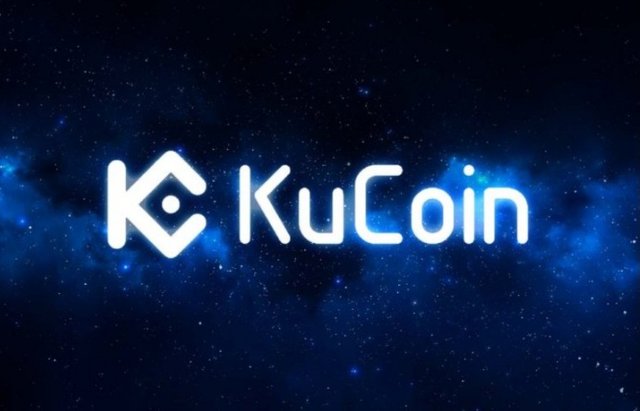Crypto Academy | Season 3: Week 1 || Staking - Homework Post for Crypto Professor @imagen
Hello cryptoacademy world.
I'm very excited to be part of this interesting class. Thanks professor @imagen and @pelon53 for an amazing lecture. After going through the lecture, below is my homework task for this week.
1.) Research and choose 2 platforms where you can do Staking, explain them, compare them and indicate which one is more profitable according to your opinion. (Binace is not allowed)
For my homework task, I'll choose KuCoin and Coinbase Exchanges to explain. Below is my explanation and comparison.
▪︎KUCOIN
This is the first Exchange Staking system. It allows users to stake various cryptocurrency assets without having to lock them. The adoption of the Soft Staking method allows for this. Soft Staking is a method which allows users to earn staking rewards without having to lock their cryptocurrency assets. It was first introduced by KuCoin in 2019. With Soft Staking, users are usually rewarded on a daily basis, thus allowing for flexibility and efficiency in portfolio and compounding management.
How Staking Works
Staking is a process that involves traders, investors or staking pool(group of stakers) to lock their cryptocurrencies in a smart contract known as Masternodes in other to earn a reward. Staking usually involves a users holding their coin in their wallet.
This locked funds stands as a kind of collateral or guarantee that the stakers will be honest and diligent in discharging their duties in validation of transactions on the platform. And if found wanting, there is something to hold onto as a form of displine to them.
In staking, the right to users to be able to validate transactions is based on the amount of coins that is being locked by the user in their wallet. Stakers are also encouraged to build new blocks or add a transaction on the blockchain to get rewarded with incentives.
▪︎COINBASE
Coinbase is one of the cryptocurrency exchange, that enables crypto traders trade(buy, sell and convert cryptocurrency) on cryptocurrencies such as Ethereum, Bitcoin, Litecoin etc. Coinbase may be used to convert one cryptocurrency to another, as well as to transfer and receive cryptocurrency between people. Coinbase, like other trading exchange, gives the real-time price and price trends of a coin, as well as a portfolio of assets and industry news.
Coinbase Exchange was invented in June 2012, by Brian Armstrong and Fred Ehrsam, and became the largest cryptocurrency Exchange in the United States by trading volume as of March 2021. Coinbase offers varities of services ranging from cryptocurrency investing, Staking Service, an advanced trading platform, custodial accounts for institutions, a wallet for regular investors, and its own U.S. dollar stable-coin.
Coinbase Exchange has a structure that consist of 0.5% premium over the market price, with a transaction fee relative to the amount transacted. In all, Coinbase offers a competitive fee structure when compared to similar trading exchange. One disadvantage of Coinbase is that, users don't have direct access to the funds stored at Coinbase and there is also poor customer support service for the users.
| KuCoin | Coinbase |
|---|---|
| The Stakable Assets of KuCoin includes; Algorand (ALGO), Cosmos (ATOM), EOS (EOS), Aion (AION), Tron (TRX), Internet of Services (IOST), Neblio (NEBL), DeepOnion (ONION), Energi (NRG), NULS (NULS), (TOMO), Loom Network (LOOM), Loki (LOKI), V Systems (VSYS), TomoChain, WAN (Wanchain), Tezos (XTZ) and PIVX (PIVX) | The Stakable Assets of Coinbase are; Ethereum (ETH), Cosmos (ATOM) and Tezos (XTZ) |
| KuCoin has a staking fee of 5-10% | Coinbase has a staking fee of 20-25% |
| KuCoin transaction fee is more transparent and low. | Coinbase Exchange transaction fee is quite high |
| KuCoin harnasses a soft-staking system that allows its users stake their crypto assets without locking them and still get rewarded on daily basis | Coinbase harnasses a classic staking system in which its users are obliged to hold their crypto assets for a particular period of time before being rewarded for staking |
Although both cryptocurrency Exchanges uses the Proof of Stake consensus algorithm
MY OPINION
From my research on both trading exchange, I will say Kucoin is more profitable than Coinbase for cryptocurrency trading. Reasons being that;
▪︎Transaction fee
KuCoin has a lower transaction costs.
▪︎Staking method
It utilizes a more innovative staking method(Soft Staking)
▪︎Flexibility
KuCoin accepts a vast range of cryptoassets to trade on, making it more flexible for users to explore other assets.
▪︎Lower staking fee
It's staking fee is very low, which gives users more avenue to save more funds.
2.) WHAT IS IMPERMANENT LOSS?
Impermanent Loss refers to the temporary loss of funds that happens to liquidity providers due to volatility of a trading pair. It usually occurs in the standard liquidity pool where the liquidity provider has to provide both assets in the equal ratio (50/50), where one of the asset is volatile in relation to the other. Which is to say, the more volatility, the greater the impermanent loss. Impermanent Loss is a major risk in decentralized finance (DeFi) and it also describes how much more money a user would have earned or had, if they held onto their asset, rather than providing liquidity.
3). WHAT IS DELEGATED PROOF OF STAKE(DPoS)?
DPoS is a consensus mechanism used in blockchain based network to ascertain who the validator of each block will be, and reach on a consensus on what data should be added to the chain. Stakeholders in a delegated proof of stake system reaches consensus based on the amount of money they have invested in the cryptocurrency system.
DPoS has a particular number of delegates that secure the network by validating transactions and blocks, and these delegates are voted into position by the token holders. It was invented in 2013 by Dan Larima, who was attempting to solve the issues that plagued Bitcoin's Proof of Work system.
HOW DPoS WORKS
The DPoS Delegate's are responsible for ensuring the nodes is always running, collecting transactions and building them into blocks to validate the transactions, and resolving consensus issues that may arise in the network.
In DPoS chains, delegates are accessible to all token holders in the network, and voting power is directly proportional to the number of tokens possessed by a certain account holder. Also, a users can delegate their voting power to another user who will vote on their behalf. The Delegates are also responsible for distributing the block rewards they receive to their voter in a proportional manner based on voting power.
In DPoS, Delegates are not required to have a big stake in the network, unlike the traditional proof of stake, but they must compete for token holders' votes.
DPoS systems also sacrifices some decentralization by limiting who is allowed to validate blocks of transactions, but in turn gain efficiency as less work is required to reach consensus on the network.
4. CONCLUSION
Staking is an integral part of cryptocurrency trading in blockchains, that involves the active participation of users in a network to earn rewards. Staking has gained more grounds in crypto world. Users who stake their coins earn a piece of the block reward in the form of newly created coins in exchange for helping to secure the network.
Impermanent Loss is usually experienced by liquidity providers and normally occurs in DeFi. As such crypto traders are advised to avoid volatile coins and provide liquidity only on Stablecoins pair.
DPoS is a unique kind algorithm, meant to achieve consensus in a decentralized ecosystem, which is very important for a decentralized cryptocurrency network system.


Thank you @meniya for participating in Steemit Crypto Academy Season 3.
You made a great effort and demonstrate knowledge of the topics requested in this assignment, however, you failed to add relevant information. I would have liked to read, at least briefly, the staking process in the 2 platforms you selected, in order to guide the readers in the use of these platforms.
I hope to continue correcting your next assignments.
Rating: 7.0
Thank you @imagen.
Hello @steemcurator02, my homework task has not been upvoted, it was graded 7 and it's 5days old. Kindly upvoteit. Thanks